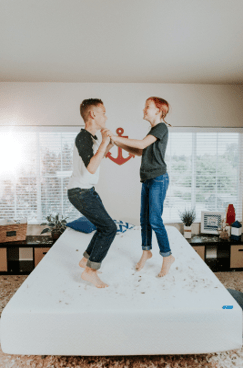Do I Really Have A Small Bladder?

We all may have heard someone in our life say, “I have a small bladder” after multiple trips to the bathroom. But have you ever thought what does a “small bladder” actually mean and is it really a thing?
The short answer is no. Anatomically, we all have the same size bladder and the capacity does not change from person to person. What does change is our sensitivity to the bladder being stretched as it fills. So what can make one person have a more sensitive bladder than another?
Before We Get To That, Let’s Learn a Little More About the Bladder…
The bladder is an expandable organ covered with muscular tissue. The walls of the bladder relax and expand as it fills with urine and then contracts to flatten or empty the urine through the urethra. As the bladder begins to fill with urine, the bladder sends a signal to the brain, normally this happens around the halfway point of filling.
In a healthy bladder, you should be able to resist this initial urge or signal to the brain until the bladder is completely full (think of it as the signal you get on your car’s dashboard alerting you your gas tank is “almost empty”). Once the bladder is stretched to its full capacity, another signal will be sent to the brain essentially telling you “it’s time to go!”.
More Bladder Norms To Know…
- The bladder can hold 1.5-2 cups of urine
- The average person urinates 6-8 times in a 24 hour period.
- Most people urinate every 3-4 hours
- Night time urinating should occur 0-1x/night
So we’ve reviewed the normal mechanics of the bladder and some normal values of healthy bladder functioning, but you may still be wondering why is my bladder so sensitive? If some of these normal values do not match with your day to day habits you may be suffering from overactive bladder.
What Is An Overactive Bladder?
Overactive bladder (or OAB) is a condition that causes a sudden and frequent urge to urinate that may be difficult to control. Those with OAB may have increased sensitivity to their bladders and feel the urge to urinate before the bladder is completely full AKA the “signal” gets sent to the brain too soon!
Causes of OAB can include dietary habits, medications, pregnancy, UTIs, and overactive pelvic floor muscles. Overtime the habit of emptying your bladder before it is full can lead to increased sensitivity of the bladder walls., thus creating a vicious cycle of training your bladder to empty when it is not all the way full and then creating a new “signal”
How Do We Treat OAB?
Evidence suggests that OAB can be treated conservatively with pelvic floor physical therapy. A pelvic floor PT can assess the tone and strength of your pelvic floor muscles and create a tailored exercise program depending on your symptoms. Your PT can help educate you on the proper behavioral changes and begin a bladder retraining program to help return your bladder to it’s rightful capacity!
We Can Help!
Body Harmony Physical Therapy offers one pelvic floor physical therapist to one patient evaluation and treatment sessions. Our treatments are for up to one hour in a private treatment room (not a booth). We provide individualized home programs to every patient. We offer a quick call back option for potential patients who have questions or concerns related to physical therapy.
(*note* The one exception of a small bladder may be a prior pelvic surgery which could impact the physical size of your bladder.)
References:
- https://medlineplus.gov/overactivebladder.html
- https://pubmed.ncbi.nlm.nih.gov/36253991/
- The Art of Control by Leslie M. Parker, PT







